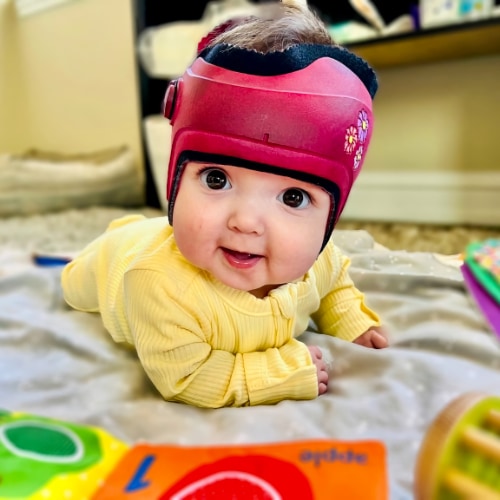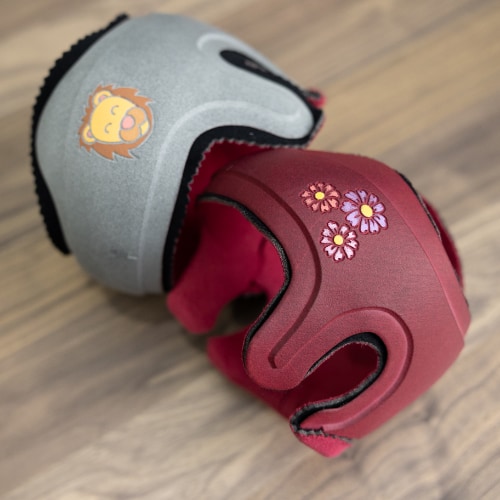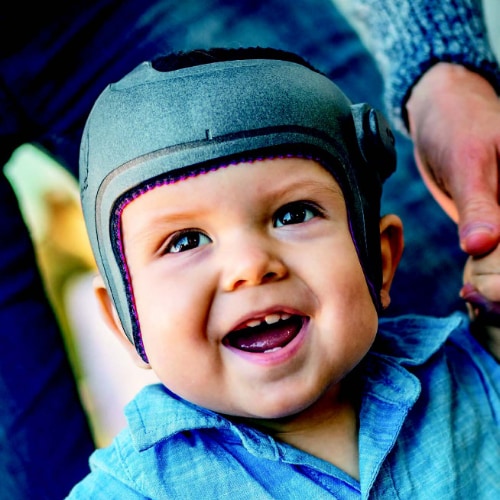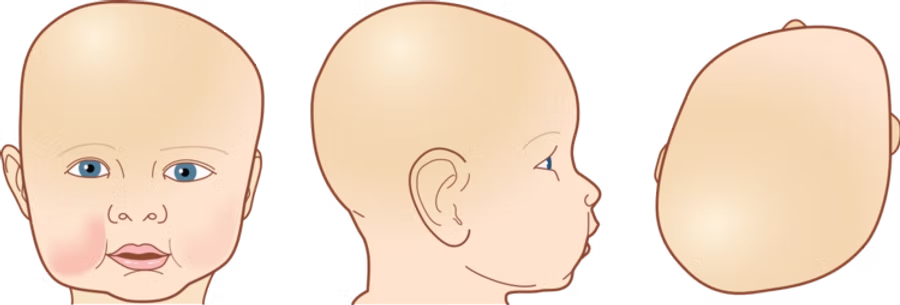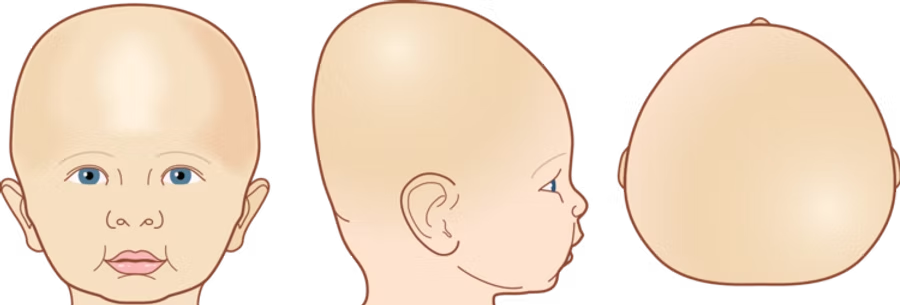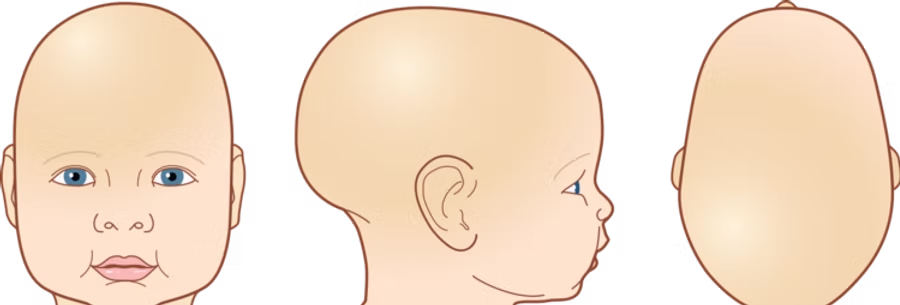What is Plagiocephaly?
When you first hear the word plagiocephaly, it can be scary. It’s a big word that’s usually accompanied by other scary words like deformity, disorder and cranial remolding. We’re here to help set you at ease.
Common Condition
Plagiocephaly, also known as Deformational Plagiocephaly, Positional Plagiocephaly or Flat Head Syndrome, is a very common condition where an infant’s soft skull becomes flattened in one or more areas. This is usually caused by infants sleeping regularly in one position, or by other situations where the infant’s head remains in one position for long periods: strollers, car seats, swings, and so on.
Plagiocephaly affects nearly one in two infants. Physicians, clinicians and therapists recommend that one in ten infants be evaluated and treated. In some cases, plagiocephaly is sometimes accompanied by a condition known as Torticollis. Infants who favor one side of the head may experience shortening or tightening of the sternocleidomastoid (SCM) muscle, which limits the range of motion and can cause the head to tilt or turn to one side.
Easily Treatable
We understand this is still sounding scary, but the reality is it’s all very treatable with a few methods.
- Early intervention by using re-positioning techniques and supervised tummy time can help to alleviate mild plagiocephaly.
- If plagiocephaly becomes severe, use of a cranial remolding orthosis, also known as a Cranial Remolding Band, Cranial Band, MyCro, Cranial Remolding Helmet or just plain Baby Helmet (not to be confused with protective helmets) will be used to gently correct your baby’s head as your infant grows.
As parents, we’re concerned that this might be uncomfortable for an infant or even painful. We can be embarrassed to take our infants out in public for fear of awkward questions or judgement. Infants are highly adaptable and can even grow to love their Cranial Helmets. We always adjust them for the correct fit and give you an after-hours number to contact the orthotist directly if you have questions in the evening or at night. We can also take comfort that society has changed its view on corrective braces, with many parents decorating their child’s cranial helmets with letters or having them painted with cool patterns.

